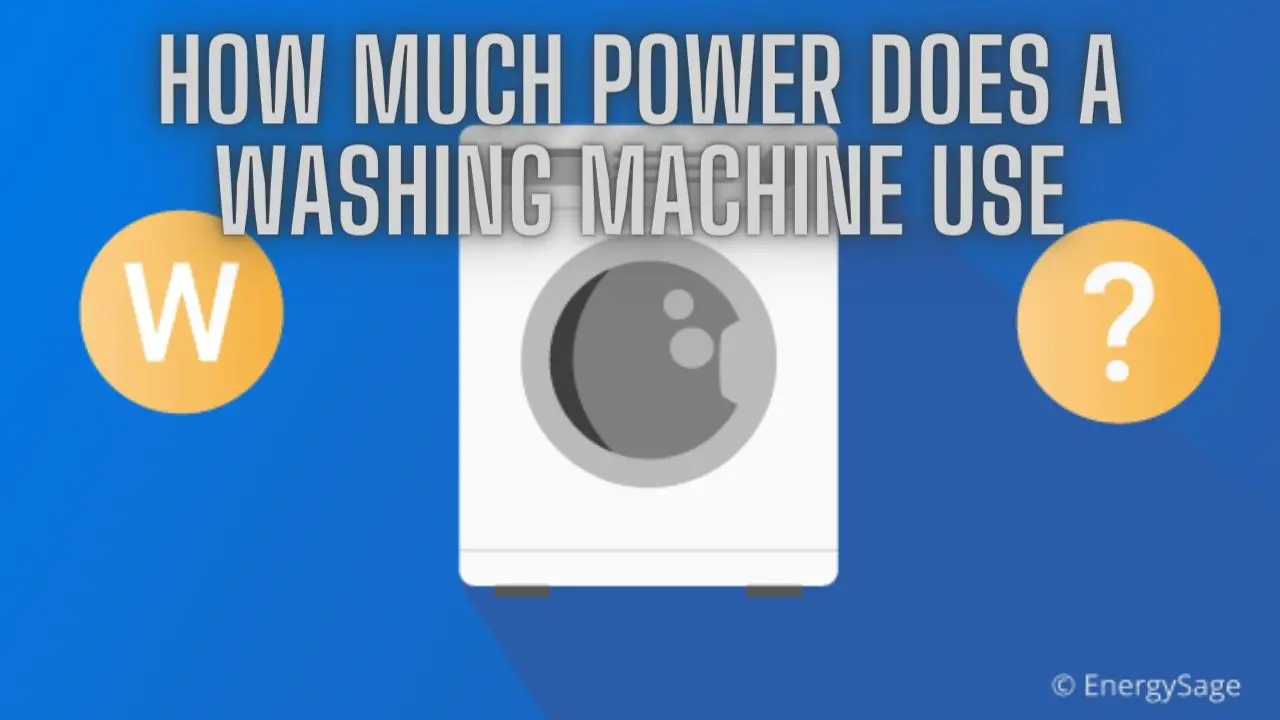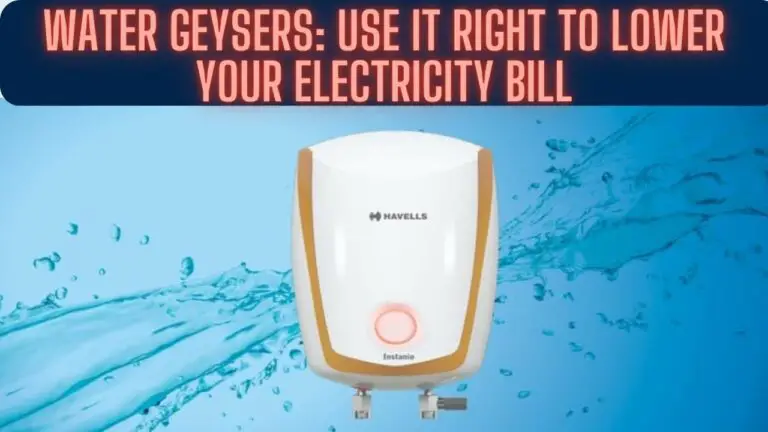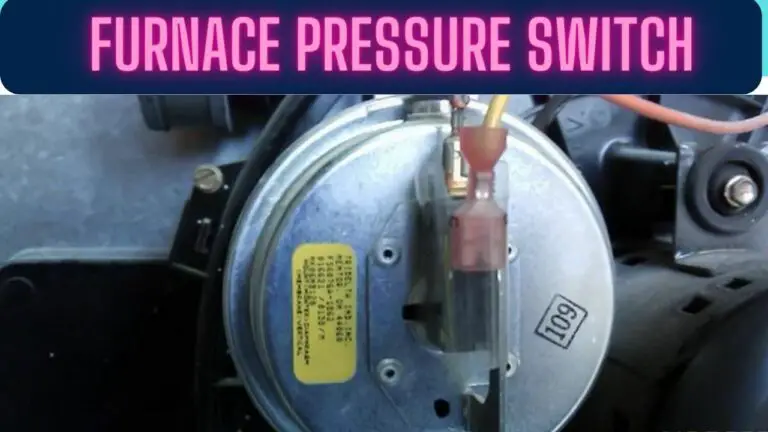How Much Power Does a Washing Machine Use?
Introduction
Washing machines are essential appliances found in most households, designed to automate the process of cleaning clothes and other fabrics. As consumers become increasingly conscious of energy consumption and environmental impact, understanding the power usage of washing machines becomes crucial. In this section, we’ll explore how much power washing machines typically consume, factors affecting their power usage, and strategies for optimizing energy efficiency. By gaining insight into the power consumption of washing machines, consumers can make informed decisions to reduce energy costs and minimize their environmental footprint.
Understanding Power Consumption
Power consumption refers to the amount of electrical energy consumed by a device over a specific period, typically measured in kilowatt-hours (kWh). In the context of washing machines, power consumption is an important consideration for both consumers and manufacturers, as it affects energy costs and environmental sustainability.
Washing machines consume power in several ways:
- Washing Cycle: The main source of power consumption in a washing machine is during the washing cycle, where the motor agitates the clothes and the drum rotates to clean them. The amount of power consumed during this phase depends on factors such as the size of the load, water temperature, and duration of the wash cycle.
- Heating: Many washing machines feature a heating element to heat water for hot or warm wash cycles. Heating water requires additional energy, contributing to overall power consumption. Washing machines with built-in heaters typically consume more power compared to those that rely solely on cold water.
- Spin Cycle: During the spin cycle, the washing machine’s motor spins the drum at high speeds to remove excess water from the clothes. While the spin cycle consumes power, it is generally more energy-efficient than using a traditional clothes dryer, as it reduces the amount of time and energy needed to dry the clothes.
- Control Panel and Electronics: Washing machines with advanced features, such as digital displays, programmable settings, and smart connectivity, may consume additional power to operate the control panel and electronics.
Factors Affecting Power Usage:
Several factors can influence the power consumption of a washing machine:
- Load Size: Larger loads require more energy to wash and spin, resulting in higher power consumption. Washing machines with larger capacities may consume more power per cycle compared to smaller-capacity models.
- Water Temperature: Heating water for hot or warm wash cycles increases power consumption. Washing machines equipped with internal heaters consume more power during hot water washes compared to those that rely on cold water only.
- Cycle Duration: Longer wash cycles consume more power than shorter cycles. Washing machines with customizable cycle durations or quick wash options allow users to reduce power consumption by selecting shorter cycles when appropriate.
- Energy Efficiency: Energy-efficient washing machines are designed to minimize power consumption while still providing effective cleaning performance. Washing machines with higher energy efficiency ratings (such as ENERGY STAR certified models) consume less power per cycle compared to less efficient models.
By understanding the factors influencing power consumption and considering energy-efficient features, consumers can make informed choices when selecting a washing machine that meets their needs while minimizing energy costs and environmental impact.
Typical Power Consumption of Washing Machines
The power consumption of washing machines can vary significantly depending on factors such as the size and type of the appliance, the efficiency of the motor and heating elements, and the settings and cycle selected by the user. However, here are some general guidelines for the typical power consumption of washing machines:
- Front-Load vs. Top-Load: Front-load washing machines tend to be more energy-efficient and consume less power compared to top-load machines. This is because front-load machines use less water and energy during the washing and spinning cycles.
- Energy Efficiency Ratings: Washing machines are often rated for energy efficiency using standards such as ENERGY STAR in the United States. ENERGY STAR certified washing machines are designed to meet strict energy efficiency criteria and typically consume less power than non-certified models.
- Power Consumption per Cycle: On average, a standard-sized washing machine consumes approximately 0.2 to 0.3 kWh of electricity per cycle for washing and spinning. However, this can vary depending on factors such as load size, water temperature, and cycle duration.
- Heating Element: Washing machines equipped with internal heaters to heat water for hot or warm wash cycles consume additional power compared to machines that rely on cold water only. The power consumption of the heating element depends on factors such as the water temperature setting and the duration of the heating cycle.
- Spin Cycle Efficiency: The efficiency of the spin cycle can also impact power consumption. Washing machines with higher spin speeds can remove more water from the clothes during the spin cycle, reducing the time and energy required for drying. However, higher spin speeds may also consume more power during the spinning phase.
- Standby Power: Some washing machines consume a small amount of power in standby mode when not in use. This standby power consumption is often minimal but can add up over time if the washing machine is left plugged in when not in use.
Overall, the typical power consumption of a washing machine can range from approximately 0.2 to 0.3 kWh per cycle for washing and spinning, with additional power consumption for heating water and standby mode. Consumers can refer to the energy efficiency label and specifications provided by manufacturers to estimate the power consumption of specific washing machine models and compare their energy efficiency ratings.
Energy Efficiency Ratings
Energy efficiency ratings provide consumers with valuable information about the energy efficiency of appliances such as washing machines. These ratings help consumers make informed choices to reduce energy consumption, save money on utility bills, and minimize environmental impact. In many countries, including the United States, energy efficiency ratings for appliances are regulated and standardized by government agencies or independent organizations. Here are some common energy efficiency ratings and labels used for washing machines:
- ENERGY STAR: ENERGY STAR is a voluntary program overseen by the U.S. Environmental Protection Agency (EPA) and the U.S. Department of Energy (DOE). Washing machines that meet ENERGY STAR criteria are certified as energy-efficient and typically consume less energy than standard models. ENERGY STAR washing machines may use advanced technologies such as sensor-controlled wash cycles, variable-speed motors, and improved insulation to reduce energy consumption. The ENERGY STAR label makes it easy for consumers to identify and choose energy-efficient washing machines.
- Energy Efficiency Classes: In Europe and many other regions, washing machines are assigned energy efficiency classes based on standardized testing procedures. These classes are typically labeled with letters ranging from A+++ (most efficient) to D (least efficient), with additional plus signs indicating higher levels of efficiency within each class. Washing machines with higher energy efficiency classes consume less energy per cycle and are more environmentally friendly.
- Energy Consumption Labels: Washing machines are often required to display energy consumption labels that provide information about their energy efficiency and annual energy consumption. These labels may include details such as the washing machine’s energy efficiency class, annual energy consumption in kWh, and water consumption in liters per cycle. By comparing energy consumption labels, consumers can choose washing machines that offer the best balance of performance and energy efficiency for their needs.
- Energy Factor (EF): In the United States, washing machines are also rated based on their energy factor (EF), which represents the energy efficiency of the appliance. The EF is calculated by dividing the capacity of the washing machine (in cubic feet) by the annual energy consumption (in kWh). Higher EF values indicate greater energy efficiency, as the washing machine consumes less energy per cubic foot of laundry capacity.
By considering energy efficiency ratings and labels when purchasing a washing machine, consumers can select models that offer superior energy efficiency and performance, leading to cost savings and reduced environmental impact over the appliance’s lifespan.
Tips for Reducing Washing Machine Power Consumption
- Use Cold Water: Washing clothes with cold water instead of hot or warm water can significantly reduce energy consumption, as heating water accounts for a large portion of a washing machine’s energy usage. Many modern detergents are formulated to work effectively in cold water, so you can still achieve clean clothes while saving energy.
- Choose Energy-Efficient Models: When purchasing a new washing machine, look for models with high energy efficiency ratings, such as ENERGY STAR certified appliances. These models are designed to consume less energy while providing efficient cleaning performance.
- Wash Full Loads: Washing full loads of laundry whenever possible maximizes the efficiency of your washing machine by reducing the number of cycles needed to clean your clothes. Avoid washing small loads unless absolutely necessary, as this can result in wasted water and energy.
- Use High Spin Speeds: Taking advantage of the high spin speeds available on your washing machine can help remove more water from your clothes during the spin cycle, reducing the time and energy required for drying. Opt for the highest spin speed recommended for your fabrics to minimize drying time.
- Use Shorter Wash Cycles: Many washing machines offer quick wash or express wash cycles that use less water and energy compared to standard cycles. Use these shorter cycles for lightly soiled clothes or when you’re in a hurry to conserve energy.
- Avoid Pre-Washing: Unless your clothes are heavily soiled, pre-washing is usually unnecessary and wastes water and energy. Modern washing machines are designed to effectively clean clothes in a single wash cycle, so skip the pre-wash option whenever possible.
- Maintain Your Washing Machine: Regular maintenance helps keep your washing machine operating efficiently and reduces energy consumption. Clean the lint filter, door seal, and detergent dispenser regularly, and check for any leaks or malfunctions that could affect performance.
- Air Dry Whenever Possible: Whenever weather and space permit, air drying your clothes instead of using a clothes dryer can save a significant amount of energy. Hang your clothes on a drying rack or clothesline to let them air dry naturally.
- Use Delay Start Feature: If your washing machine has a delay start feature, you can take advantage of off-peak electricity rates by scheduling your wash cycles to run during times when energy demand and prices are lower.
- Unplug When Not in Use: When your washing machine is not in use, unplug it from the power outlet to eliminate standby power consumption. Washing machines and other appliances can still draw small amounts of power even when turned off, contributing to energy waste over time.
By implementing these tips, you can reduce the power consumption of your washing machine and minimize your household’s energy usage and environmental impact.
FAQS
How much electricity does a washing machine use per load?
- The electricity consumption of a washing machine per load can vary widely depending on the machine’s type, capacity, and settings. On average, a standard washing machine in the United States consumes around 400 to 800 watts per hour during a typical cycle.
Does the type of washing machine affect its power consumption?
- Yes, the type of washing machine can significantly impact power consumption. Front-loading machines are generally more energy-efficient and use less power than top-loading machines. High-efficiency front-loaders are designed to use less water and electricity.
Are larger-capacity washing machines more energy-intensive?
- Yes, larger-capacity washing machines tend to use more electricity because they require more water and energy to operate. However, they can also handle more laundry per cycle, potentially reducing the number of loads needed.
Is it more energy-efficient to wash clothes in hot water or cold water?
- Washing clothes in cold water is more energy-efficient than using hot or warm water. Modern detergents are formulated to work effectively in cold water, and heating water accounts for a significant portion of a washing machine’s energy consumption.
Are there energy-efficient washing machine cycles?
- Yes, many washing machines offer energy-efficient cycles, such as quick wash or eco-friendly cycles. These cycles typically use less water and electricity but may have longer run times.
How can I determine the power consumption of my specific washing machine?
- You can usually find information about the power consumption of your washing machine in the owner’s manual or on a label located on the machine itself. Look for the wattage rating or energy usage details.
Can I reduce the power consumption of my washing machine without buying a new one?
- Yes, you can reduce the power consumption of your existing washing machine by following energy-saving practices. These include washing full loads, using cold water, selecting appropriate cycles, maintaining the machine, and air-drying clothes when possible.
Do front-loading washing machines use less electricity than top-loading machines?
- Generally, yes. Front-loading washing machines are designed to be more energy-efficient than top-loaders. Their horizontal drum design allows for better water and energy efficiency.
Are ENERGY STAR certified washing machines more energy-efficient?
- Yes, ENERGY STAR certified washing machines are specifically designed to meet energy efficiency guidelines set by the U.S. Environmental Protection Agency (EPA). These machines use less water and energy compared to non-certified models.
How can I monitor and track my washing machine’s power usage?
- You can use a plug-in energy monitor or smart plug to track the power consumption of your washing machine over time. Many of these devices provide real-time data and usage history to help you make informed decisions about energy usage.
Conclusion
In conclusion, the power consumption of a washing machine varies based on several factors, including type, size, and usage patterns. By understanding how your machine consumes energy and implementing energy-saving practices, you can reduce your environmental footprint and save on electricity costs while maintaining clean and fresh laundry.







